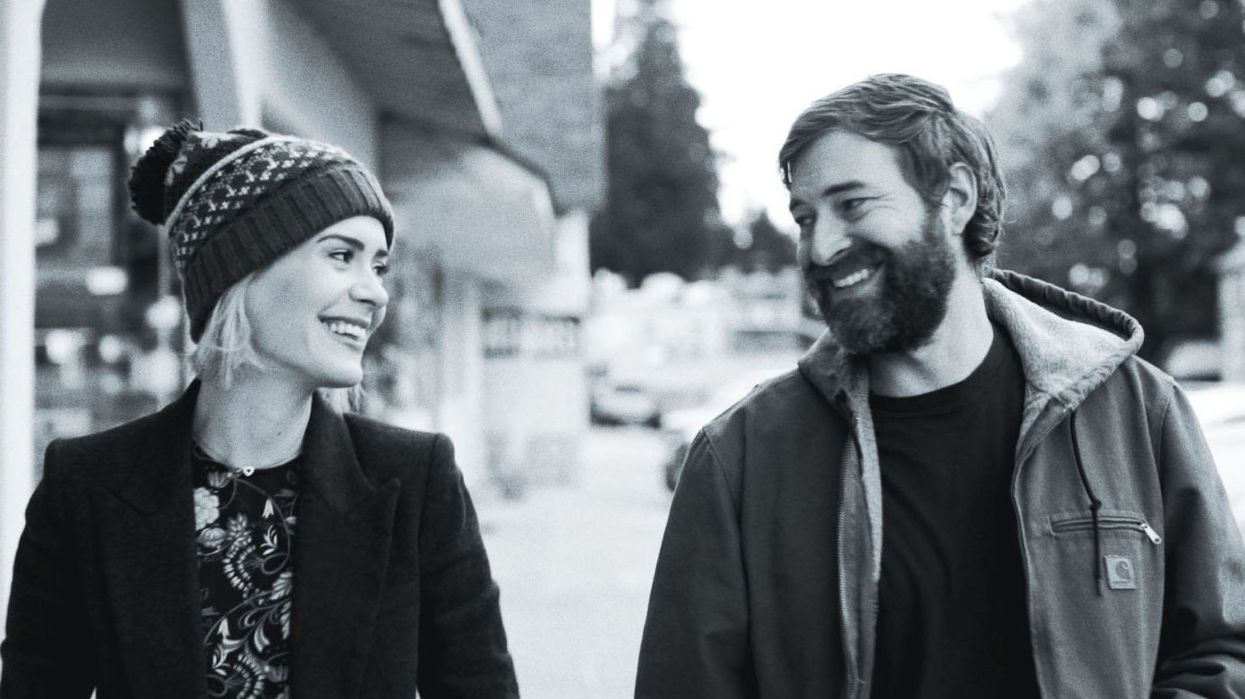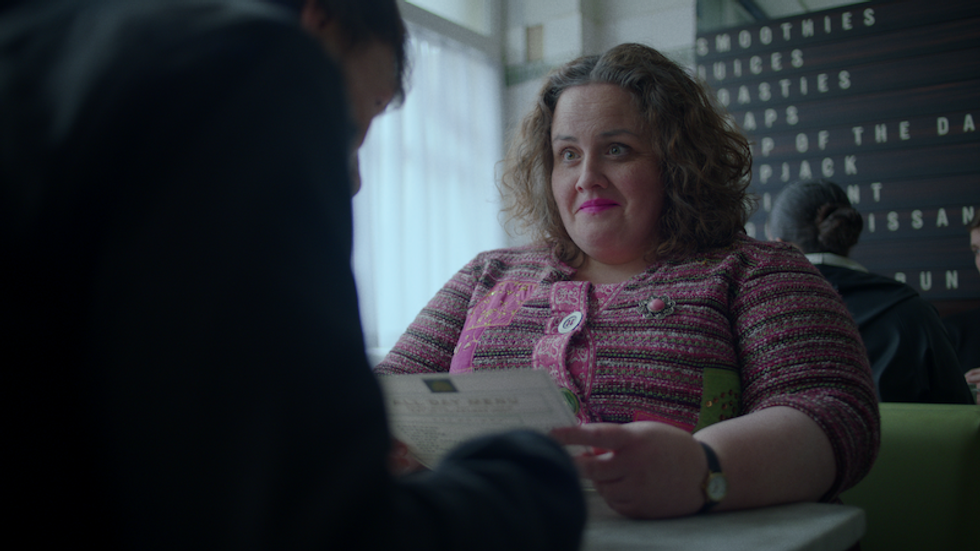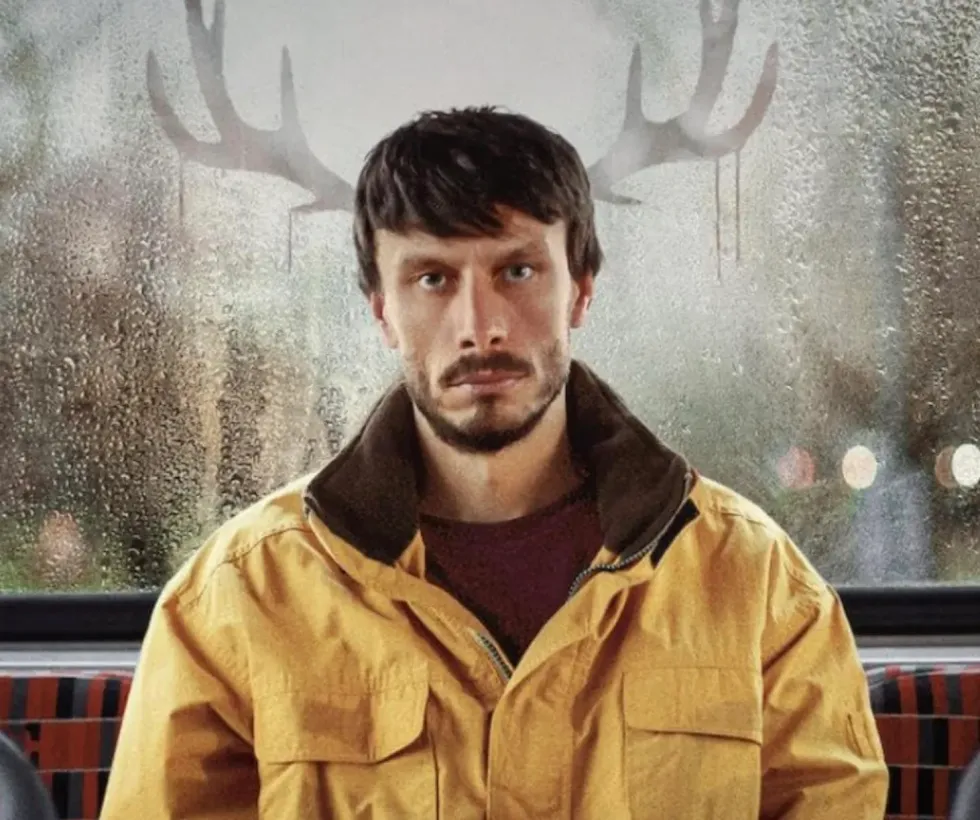'Blue Jay': Alex Lehmann Proves Cinematographers Can Also Become Directors
With 'Blue Jay,' Alex Lehmann shows the cinematographer-director path is alive and kicking.

If you take an assortment of film gigs on the path to becoming a director, you might feel like you're getting sidetracked. But what if the skills you're honing in the process are just what you need to become a director?
That’s the story of Alex Lehmann, who refined his directorial eye as a cinematographer on over 30 narrative and documentary projects. After becoming friends with Mark Duplass as a camera operator on The League, Lehmann got his dream job: he was commissioned by Duplass to direct his debut narrative feature, Blue Jay.
"Mark Duplass wanted someone who could direct from behind the camera."
Out this week on VOD and in select theaters this Friday, Lehmann’s directorial debut is a lovely, hyper-focused black and white character study starring Duplass and Sarah Paulson that combines the rare set of skills Lehmann has been perfecting over the last decade. Lehmann sat down with No Film School to talk about drafting a two-page treatment for Duplass, creating the right environment for improv, his "no assholes" policy, and why he chooses to operate the camera himself wherever possible.
NFS: You’ve been working in the industry as a cinematographer. When we spoke to you last at SXSW, you had just premiered your first doc, Aspergers Are Us. Now, your first narrative is out. Mark Duplass came up with the story. How did this come about?
Alex Lehmann: [Mark Duplass] was looking for something very specific, which narrowed it down for me. It was lucky for me; he has worked with a lot of great filmmakers and directors, but here, he wanted someone who could direct from behind the camera. He wanted someone who had a documentary background because we would be shooting improv and chasing the story. He wanted someone who was between introspective and melancholic…well, some of the time!
"You pick up different cues and subtleties in moments you catch with your camera...so a lot of my narrative cinematography also informed how we shot Blue Jay."
NFS: After he approached you with the story idea, did you storyboard? What was the next step in the process?
Lehmann: We never had a full script. It started out with a two-page treatment that was very efficiently written. It had the whole story and the feeling, and a good sense of who the characters were.
Then we had these meetings where Sarah [Paulson], Mark, myself, Mel Eslyn [producer], the other producers, and I would sit in a room and talk about what was on paper already—what resonated, what our personal stories were. We basically vibed out more ideas for the story. We’d go back and write that stuff in. By the end, we had 15 pages of a treatment that we used to shoot the film.
The group sessions were really cool. It was a beautiful thing—it felt like group therapy or the Breakfast Club. Everybody was putting stuff out there, and pretty quickly we were all very exposed and loving of each other. We had all gone to some places together. When you create that kind of energy, it translates on to set and [production].

NFS: At what point did you decide the film would be in black and white?
Lehmann: Mark wasn’t sure about it. I’m pretty sure we put a big target on our back because everyone can then think, "Oh, how pretentious." We had to make sure we were shooting in black and white for the right reasons. Our gut feeling kept pushing us back there. Something Mark does really well is that he recognizes when people have these gut feelings. He tells you to stop thinking and just follow your gut. It felt right.
It felt like it highlights a really simple story, like those simple classics where you get to listen to the characters more. It’s more about who they are and what they are talking about, and all the other distractions go away. We wanted to strip the distractions away, so that included stripping the color out.
"We wanted to strip the distractions away, so that included stripping the color out."
NFS: From the start of this film, something about the black and white does make you pay attention to every minute detail. Did shooting in black and white change the way you visualized the story? How did it alter production?
Lehmann: Emotionally, it started informing me, subconsciously, of the movies I grew up on. We weren’t trying to be an early Jarmusch film or trying to be an early Truffaut. Those are all movies that I love, of course, and watched many times. When you look at a black and white monitor on set, some of the simplicity of those previous films resonate with you, and you can’t help but want to evoke a certain shooting style.
Technically, we had committed to shooting black and white, which is the only way to do it right: You preview it as black and white, so you can light for black and white and compose for black and white, which can be really different. It doesn’t work to shoot it in color and strip away in post. We had color data for our footage, but we were seeing it—monitoring it—in black and white. It affected me as a cinematographer and as a director, and anyone else peeking at the monitor. It would transport you to the world of the story.
NFS: Was it important to you to be actually operating the camera during production? I know you had a few camera operators.
Lehmann: When it was a handheld, longer take from a single angle, I wanted to be on camera to really focus on what element I wanted to show at what time. That’s an instinctual thing. It’s really hard to have that conversation with your camera operator: “He’s feeling this when she says this…” When you’re improv-ing, those things can happen really quickly, and you can’t account for it all ahead of time. I wanted to hold the camera for those scenes.
When it’s scenes where the cameras are stationary and two characters a sitting or talking, that’s when I’d go back to the monitors and have two operators cross-shooting. Then I could see everything that was going on—see both faces.
"I like the ability to have the A camera reactive to what the actors are doing, and have a B camera shooting a safety shot so we don’t miss anything important."
NFS: Did the experience of shooting documentary inform the way you listen to and shoot these improvisational scenes? How about your other cinematography work informing how you directed the film?
Lehmann: Yes, a big part of it is having shot docs. I shot Aspergers Are Us, which I also directed, and many others where I was a cinematographer only. You pick up different cues and subtleties in moments you catch with your camera. Even in a lot of my narrative cinematography, I like the ability to have the A camera reactive to what the actors are doing, and have a B camera shooting a safety shot so we don’t miss anything important that we’ll need to stitch a scene together, or if an actor does something great where a camera wouldn’t have otherwise been on them. So a lot of my narrative cinematography also informed how we shot Blue Jay.

NFS: How did you create the best environment to allow Mark and Sarah to focus on their acting and the improv?
Lehmann: We kept our crew really small. That was very important. We had a no-assholes policy! It’s funny that that’s even a policy people have. It seems like a no-brainer, but we made an extra effort to only hire crew that we really vibed with, so there would be no tension on set.
I tried to light things simply and quickly. I kept set dressing, props, hair, and makeup more simple. That way, Mark and Sarah had more time to do their thing. With a movie like this, you basically want to give them as much time as possible to try as many things as they want. Or just to sit there in between takes to take as much time as they want before they shoot again, knowing everything else is ready, and it’s up to them to find the moment and tell the story.
"You have to recognize all the gifts being brought to you by equally or more talented people in other positions on the crew that have been perfecting their roles on set and bring their experience and perspective."
NFS: When you hear that the movie is both improvised and handheld, you might think of the choppy, gritty handheld that you see in a lot of indies. Blue Jay is quite still. What was your philosophy about camera movement?
Lehmann: A lot of it is patience—knowing that everything you want to see, you’re also going to hear. You don’t necessarily need to be seeing [on camera] what you’re hearing at the same time. You don’t need to panic.
I have to admit it is cheating a little, because I got to work with Mark and Sarah, who are both doing so many great things. It’s not like you’re trying to hide a bad performance. It’s not like, “There are only going to be three magical moments in this film, and I got two of the three.” Here, they are producing a wealth of moments that we get to pick and choose from. So it’s like finding oil in my backyard. You can dig anywhere and find oil! So besides having great collaborators in Mark and Sarah, the rest comes down to patience.

Lehmann: I’ll say a few things. There’s that thing you hear, which is true: just go out and do it. Don’t spend too much money on your first film, and don’t be afraid of failing. There might be a learning curve. Don’t compare yourself to your film heroes' best films! They also made sucky films first.
At some point, you find yourself in that place where you think, "Finally, this is the one that might help me break through." When you start to be surrounded by very talented people—a great sound guy, great producers, strong actors—it’s important as a director to remind yourself and appreciate all of the things that everyone else is bringing. If you can use them, you will get a way better product than you are if you are just busy trying to exact your vision in a way that requires you to have blinders on. You have to recognize all the gifts being brought to you by equally or more talented people in other positions on the crew that have been perfecting their roles on set and bring their experience and perspective with them. Use it for all it’s worth.
"I’ve always wanted to direct narrative features. I just kind of got sidetracked...but it was worth it because I learned what I needed on the way."
NFS: Will you direct more narratives after this experience?
Lehmann: Absolutely! I’ve always wanted to direct narrative features. I just kind of got sidetracked. I got caught up making the Aspergers Are Us documentary because I was researching Aspergers and comedy for a script. When I came across that comedy troupe, I realized it was more interesting than what I was writing. So I decided to make a documentary.
In a way, I feel like I’m getting back on track as to what my original goals were. It took a while to get here, but it was worth it because I learned what I needed on the way. And now I’m writing and reading scripts, and I hope I get to make the next one soon.
For me, it’s humbling having cool people showing interest, and to be on No Film School. I don’t take for granted where I am, or opportunities I’ve been given. That’s the most important thing I can say. For any of you guys reading: I support what all of you guys are doing, and everybody taking their own path.
'Blue Jay' is out in theaters this week in both Los Angeles and NYC, as well as on Amazon, Google Play, iTunes, and most other VOD platforms.














